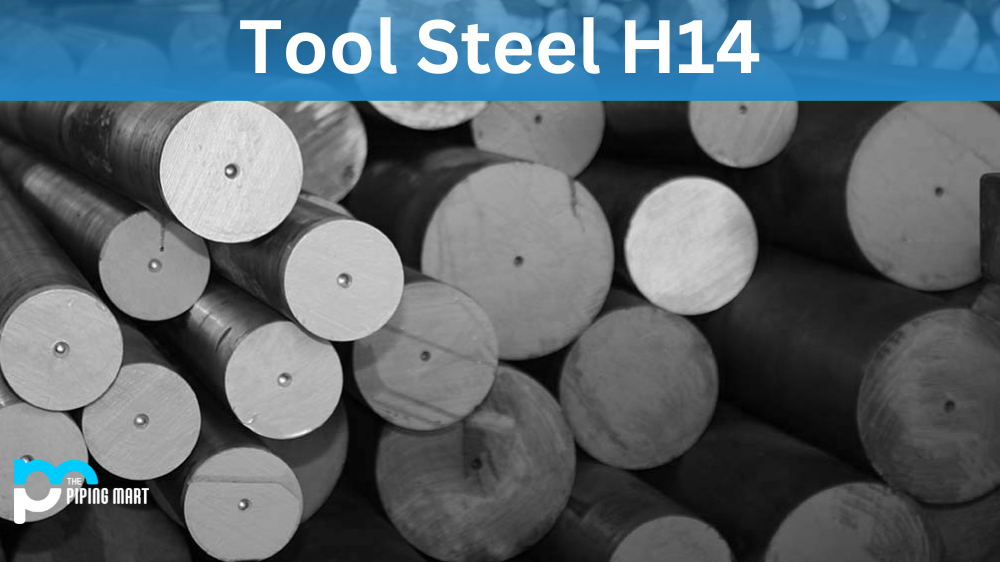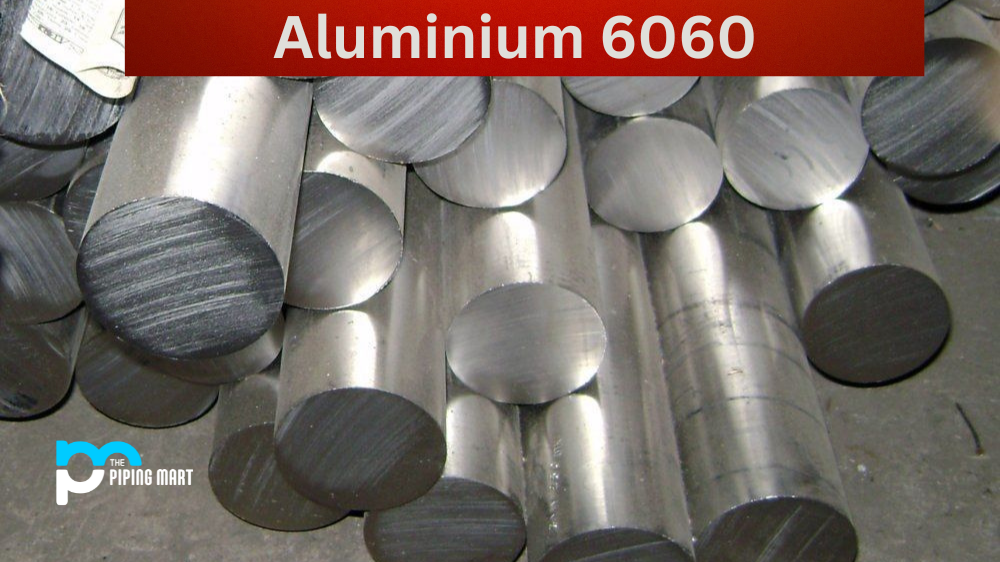Tool Steel H14 is high-speed steel known for its impressive wear resistance, strength, and toughness. It is often used in producing cutting tools, dies, and other forms of machinery where its superior characteristics can be used. But what is Tool Steel H14 exactly? In this blog post, we’ll review this valuable material’s composition, properties, uses, corrosion resistance and heat resistance.
H14 Tool Steel Composition
H14 Tool Steel also knowns as Chromium Hot-Work Steels contains a combination of iron (Fe), chromium (Cr), molybdenum (Mo), vanadium (V), tungsten (W) and manganese (Mn). This combination gives the material its impressive strength and wear resistance. It also enables it to retain its hardness at elevated temperatures. The exact composition depends on the manufacturer, but typical values include 4.00% Carbon (C), 2.50% Chromium (Cr), 1.50% Molybdenum (Mo), 0.40% Vanadium (V), 0.40% Tungsten (W) and 0.80% Manganese (Mn).
| Element | Content (%) |
|---|---|
| C | 0.35-0.45 |
| Mn | 0.20-0.50 |
| Si | 0.80-1.20 |
| Cr | 4.75-5.50 |
| Ni | 0.3 |
| Cu | 0.25 |
| P | 0.03 |
| S | 0.03 |
| W | 4.00-5.25 |
H14 Tool Steel Mechanical Properties
Steel H14 has impressive mechanical properties, making it suitable for applications requiring superior wear resistance or strength at high temperatures. Those properties include a tensile strength of 1330MPa, an elasticity modulus of 190GPa and an elongation at a break value of 20%. The material also has excellent impact toughness values, which make it suitable for machining operations that require a lot of shock absorption capabilities, such as drilling or milling hard materials like aluminium or stainless steel alloys.
| Properties | Metric | Imperial |
|---|---|---|
| Hardness, Rockwell C (air cooled from 982°C, 30 mins) | 52 | 52 |
| Hardness, Rockwell C (air cooled from 1010°C, 30 mins) | 55 | 55 |
| Hardness, Rockwell C (air cooled from 1038°C, 30 mins) | 56 | 56 |
| Modulus of elasticity | 207 GPa | 30000 ksi |
| Charpy impact (V-notch; air cooled from 1010°C; 490°C temper temperature) | 12.9 J | 9.50 ft-lb |
| Charpy impact (V-notch; air cooled from 1010°C; 370°C temper temperature) | 16.3 J | 12.0 ft-lb |
| Charpy impact (V-notch; air cooled from 1010°C; 650°C temper temperature) | 17.6 J | 13.0 ft-lb |
| Machinability (1% carbon steel) | 70.0 – 75.0% | 70.0 – 75.0% |
| Poisson’s ratio | 0.27-0.30 | 0.27-0.30 |
H14 Tool Steel Physical Properties
The physical properties of alloy H14 are equally impressive compared to other high-speed steels in the same category due to their unique composition that includes various alloying elements such as chromium, molybdenum and vanadium. It has an incredibly high melting point with values up to 1424°C while maintaining very good flexibility when subjected to extreme temperatures, even up to 950°C, without losing its hardness or strength significantly. It also has excellent thermal conductivity, which makes it ideal for machining operations that require rapid cooling during the cutting process to prevent any warping or distortion due to temperature changes caused by friction between the tool and workpiece materials during cutting operations.
| Properties | Metric | Imperial |
|---|---|---|
| Density | 7.89 g/cm3 | 0.285 lb/in3 |
H14 Tool Steel Thermal Proeprties
| Properties | Conditions | ||
|---|---|---|---|
| T (°C) | Treatment | ||
| Thermal expansion | 11 x 10-6/ºC | 20-100 | – |
H14 Tool Steel Equivalents
- ASTM A681
- FED QQ-T-570
- UNS T20814
H14 Tool Steel Uses
Due to its excellent combination of mechanical properties such as wear resistance, strength at elevated temperatures, impact toughness and thermal conductivity; Tool Steel H14 is widely used in various industries such as automotive engineering where components requiring superior wear resistance are produced from this material due to its ability to keep its hardness even after long periods in contact with hot surfaces like exhaust valves for example; tool making industry for producing highly durable tools such as punches; aerospace engineering where components subject to extreme conditions need superior performance from their materials; food processing industry where parts made from this steel are often used due to their excellent corrosion resistance; oil & gas industry where components exposed directly to corrosive environment need strong protection from those elements; medical industry where parts such as surgical instruments are produced from this steel due its superior edge retention capabilities ensuring precise cuts every time without risking damage or tears on delicate tissue structures during surgery procedures among many other uses that take advantage of all the great features offered by this particular alloy making it one of the most versatile materials available today!
Corrosion Resistance
Tool Steel H14 is an appealing material for engineering due to its corrosion resistance. This highly versatile alloy contains higher-than-normal levels of chromium, granting it superb protection from oxidization and corrosion in various temperatures and other conditions. Tool Steel H14 also resists scaling at temperatures up to 2102 degrees Fahrenheit as long as the surface of the steel is kept clean. When exposed to salt water, Tool Steel H14 provides more protection than unalloyed carbon steel and has excellent punching capabilities when used for marine-grade fastenings. This type of steel stands up against several outside aggressors, making it suitable for indoor and outdoor projects where the utmost durability is required.
Heat Resistance
Tool steel H14 offers superior heat resistance, making it a preferred material for temperatures up to 1000°F (538°C), making it far more resilient and durable than other traditional steels. Much of its heat resistance comes from its ability to retain strength and hardness at high temperatures and its superior resistance against wear, deformation and distortion caused by excessive heat. It is perfect for situations that require tough work with heat-treating or welding of materials. The versatility of this tool steel makes it popular among manufacturers in various industries due to its beneficial properties.
Machining
Tool steel H14 machining is used to shape and form harder metals into desired shapes. It is essential when creating various machines and tools, providing a level of precision that guarantees accuracy and dependability. Not only does it provide time savings during the manufacturing process, but its accuracy and reliability often result in substantial cost savings too! H14 tool steel machining also requires specialized equipment such as lathes and grinding wheels, making it all the more important to choose the right company for the job. Overall, few materials can match the strength and durability of tool steel H14 machining, making it one of the most sought-after materials for precision applications.
Welding
Welding with tool steel H14 poses its own set of challenges and opportunities. The heat generated during welding should be kept low, and the heat demands careful control to keep the process consistent. To help with this, using a slower rate of speed or a larger weave for welding can help reduce the amount of thermal shock the steel is exposed to during the welding process. You must also pre-heat the steel before welding to reduce cracking throughout and increase flexibility at welds. When done correctly, tool steel H14 welding offers immense strength and durability from its resistance to wear, fatigue, corrosion and oxy-acetylene cutting. Knowing what techniques are needed before attempting is key, as it can save time on post-weld heat treatments for improved results.
Conclusion
In conclusion, Tool Steel H14 is a versatile material with numerous applications in various industries thanks mainly due to its impressive mechanical properties, including wear resistance, strength at elevated temperatures and impact toughness along with good corrosion-resistant qualities plus excellent thermal conductivity making it ideal for machining operations requiring rapid cooling during cutting processes so that no warping occurs on finished components after manufacturing them from this particular alloy! Its wide range of uses makes it a valuable asset within any organization looking for reliable solutions under extreme conditions! Intended Audience: Engineers working with tool steel alloys looking for information about Alloy H14 characteristics and possible applications for the material.

Pipingmart is a B2B portal that specializes in metal, industrial and piping items. Additionally, we share the latest information and information about materials, products and various types of grades to assist businesses that are involved in this business.




